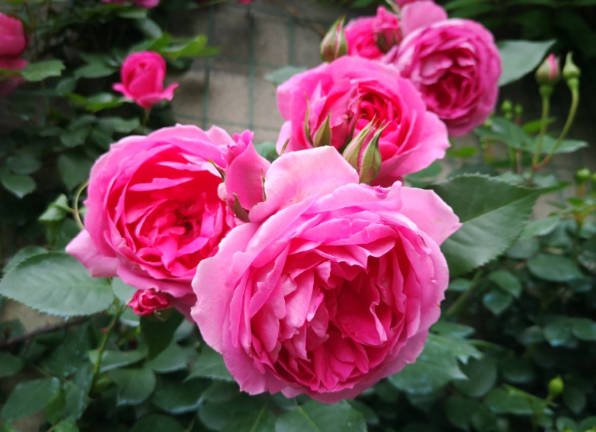How do you treat powdery mildew on roses?
Although it is often said that it rains at the time of Ching Ming, the rains did come earlier this year, raining almost constantly in March, and rainy weather is expected to continue for the rest of the year. Although spring rains are expensive, prolonged rainfall is not a good thing for roses. Continuous rainy weather increases the risk of roses contracting powdery mildew and black spot. Therefore, you need to pay special attention to preventing and managing these two diseases in the coming days.
Early symptoms of powdery mildew on roses
Many gardeners have recently asked why their roses have curled leaves. If your roses are also experiencing leaves curling inward, beware; this is usually a sign that the roses are infected with powdery mildew.

Look closely at the leaves of your roses and if you see wrinkled, twisted, slightly inward curling leaves, and especially if you see a white powdery substance on the backs of the leaves, then you can be sure that it is powdery mildew, and you need to take immediate steps to treat it.
Powdery mildew not only affects the new leaves of roses, but the old ones are also affected. In severe cases, the white powder will cover the leaves and flower buds, seriously affecting the normal growth of roses.
Prevention and treatment of powdery mildew on roses

- Of all the diseases of roses, powdery mildew is considered one of the more difficult to deal with, so prevention is especially important.
- Spring is the rapid growth period of roses, and excessive use of nitrogen fertilizer should be avoided, because too much nitrogen fertilizer will cause rose branches and leaves to be too tender, thus reducing the resistance to powdery mildew. It is recommended to use a balanced nitrogen, phosphorus and potassium fertilizer to fertilize before there are no buds.
- Keep the environment well ventilated during daily care, especially on humid and rainy days. Disease germs usually lurk in the soil. You can sprinkle some fungicidal granules, such as small powder medicine, on the surface of the potting soil before the disease occurs.
- During continuous sunny days, it is recommended to spray zinc diclofenac and carbendazim every 15 days to prevent powdery mildew and black spot. When encountering continuous rainy weather, it is important to spray fungicide for prevention every time the rain stops.
- Once roses are found to be infected with powdery mildew, the diseased leaves should first be removed to prevent further spread of the disease. Then spray a full range of fungicides, either by choosing a product specifically designed for powdery mildew, such as Senba Powdery Mildew Specialty, or by using a whole-plant spray such as Seko or Lunasun.
- As powdery mildew is more difficult to treat, it is recommended to spray the medication every other day for three consecutive sprays. If it is detected early and treated in time, it can usually be cured with three applications. If the disease is more serious and conventional drugs are not effective, it is recommended to spray with lithosulfur compound. As a strong alkaline agent, stone sulfur compound has a better efficacy on powdery mildew, usually 2-3 times of continuous spraying can be effective. However, it should be noted that the use of sulfuric acid is easy to burn the leaves at high temperatures, it is recommended to dilute to 800-1000 times the liquid before use.





